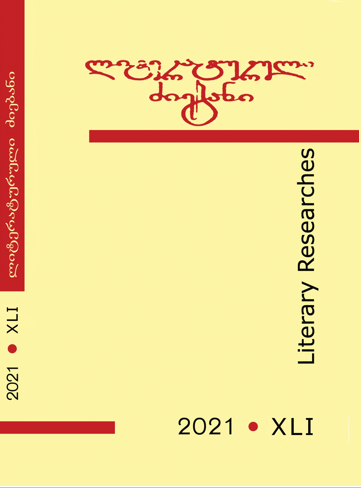Published 2021-12-20
Keywords
- Arts,
- History,
- Novel
How to Cite
Abstract
The work by Dimitri Tumanishvili aims at examining the ways used in novel “Face to Face” by Georgian writer, novelist Alexandre Kutateli (1898-1982) to describe contemporary or ancient art and to describe artistic issues at the same time. The author started to publish his novel in 1930 and finished it in 1952. Virtually, the novel considers all possible life aspects of Georgia from 1917 to 1921, starting from the overthrow of the Russian monarchy through the occupation of the Democratic Republic of Georgia by the army of the Soviet Russia. It may be said that the novel gives the most thorough description of the history of the First Republic of Georgia.
The research maintains that the writer was thoroughly aware and knowledgeable of the questions of culture, and his judgments in this respect are well grounded and important. The work examines the ways used in the novel to describe the specimens of art, first, as houses, buildings and apartments and then, as historical churches or monasteries and shows the writer’s attitude to the modernist art of that time. The article gives an opinion suggesting that the criticism both, of avant-grade in art and left-wing in politics (Social Democracy in this case) describes the author’s candid attitude in general and is not a bit of a trial to swindle the Soviet-Communist political censorship. At the same time, the work raises the following question: as some real and historical persons of the 1910-1920s can be easily identified among the characters of the novel (particularly the ones engaged in politics or busy with pen and ink), whether artist Mikha Machavariani, one of the characters of the novel, has such a prototype. As the article concludes, he is a resumptive and consolidating character of the Georgian artists of that period.
In the afterword of the research, Merab Ghaghanidze gives a brief history describing the process of writing and publishing the essay by Dimitri Tumanishvili (1950-2019).

